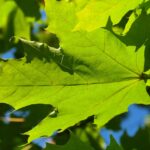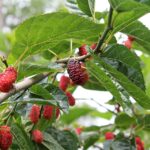Blue Spruce Pruning Made Easy: When and How to Trim Properly

One of the few exquisite evergreens, blue spruce trees have silvery-blue needles that can beautify any landscape, while their clean, symmetrical conical structure seems perfect from every angle. However, to retain this beauty, the art of blue spruce pruning must be understood. Many homeowners shy away from the idea of pruning majestic trees, but with some knowledge and timing, pruning blue spruce can be quite simple.
Why Blue Spruce Pruning Matters
Blue spruce trees ideally grow in a beautiful conical shape but do benefit from some pruning here and there. A well-executed blue spruce prune retains its classic form, removes dead or diseased branches, and helps overcrowding issues that can bring diseases. Pruning also can be used to manage size, and sometimes helps in encouraging denser growth to serve as a privacy screen.
Left to their own devices, blue spruce trees can develop weak branch structures, lose their lower limbs, or invite pest problems. Thus, it becomes imperative for any homeowner with these evergreen beauties to learn when and how to approach blue spruce tree pruning.
Perfect Timing for Pruning Blue Spruce Trees
The timing of blue spruce pruning is crucial for the tree’s health and your success. The optimal window for pruning blue spruce is during late winter or early spring, specifically from late February through early April, while the tree remains dormant.
During this dormant period, the tree isn’t actively growing, which means your pruning cuts won’t stimulate unwanted growth that could be damaged by late frosts. Additionally, pruning blue spruce trees during dormancy allows you to see the tree’s structure clearly without being obscured by dense foliage.
Some experienced arborists prefer to wait until just after the new growth appears in late spring, typically mid to late May. This approach allows you to see exactly where the fresh growth is emerging, making it easier to make precise cuts while maintaining the tree’s natural beauty.
Essential Tools for Blue Spruce Pruning
Before beginning any pruning blue spruce project, ensure you have the right tools. Clean, sharp pruning shears are essential for smaller branches, while loppers handle medium-sized branches up to two inches in diameter. For larger branches, a pruning saw may be necessary.
Always disinfect your tools between cuts with rubbing alcohol or a bleach solution to prevent the spread of disease. Dull tools can crush branches rather than making clean cuts, which can leave your blue spruce vulnerable to pest and disease problems.
Step-by-Step Blue Spruce Pruning Technique
Start your blue spruce pruning by removing any dead, damaged, or diseased branches. These are easy to identify as they’ll appear brown, broken, or obviously unhealthy compared to the vibrant blue-green of healthy growth.
Next, look for branches that are crossing or rubbing against each other. Remove the weaker of the two branches to prevent future damage. When pruning blue spruce trees, always cut back to a lateral branch or bud rather than leaving stubs, which can become entry points for diseases.
For shaping purposes, focus on maintaining the tree’s natural pyramid form. Remove any branches that extend significantly beyond the tree’s natural silhouette. Remember that blue spruce trees grow slowly, so be conservative with your cuts – you can always remove more later, but you can’t put branches back.
Common Mistakes to Avoid
One of the biggest mistakes in pruning blue spruce is removing too much at once. Never remove more than 25% of the tree’s foliage in a single year, as this can stress the tree and potentially kill it. Blue spruce trees don’t recover from heavy pruning as well as deciduous trees.
An infraction often committed is topping or cutting the central leader. Topping destroys the inherent form of the tree and sometimes creates many competing leaders. Development of the tree’s structure is then weakened. The central leader should be upheld for the familiar scrambled Christmas tree look.
When to Call a Professional
In most basic pruning of the blue spruce trees, it can be done by an average homeowner, but there are instances when an expert is needed. If one has to eliminate huge branches with power lines surrounding, better would it be to hire a certified arborist for the job.
Certified arborists have expertise and equipment to handle complicated situations of blue spruce trees’ pruning safely and efficiently. They can also detect disorders unnoticed by the eyes of the untrained ones.
Maintaining Your Blue Spruce After Pruning
After the blue spruce pruning has been accomplished, closely observe the tree for any signs of stress or disease. Deep water during drought elsewhere, and in early spring, you may apply a balanced, slow-release fertilizer to encourage healthy growth.
If you learn the appropriate timing, method, and follow-up care, pruning blue spruce trees will be a relatively simple task that keeps your evergreens healthy.



